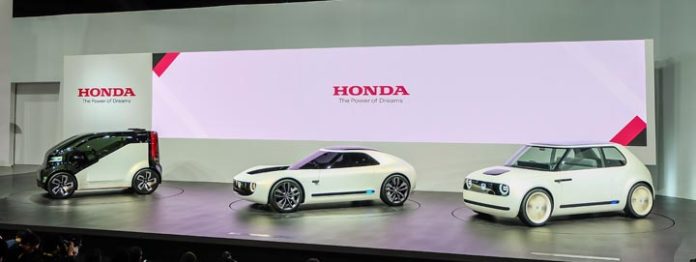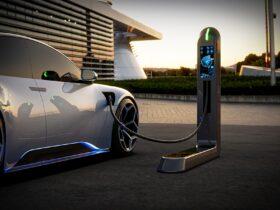INDEED, the world is heading to the future, where vehicles will be run by green energies and more in-sync with humans. That is why the 45th Tokyo Motor Show was all about going beyond motor vehicles by discovering new directions in order to redefine the very meaning of “automobile”. The convention showcased numerous concept cars, exhibiting future possibilities for the society and mobility.

Honda Motor Co. Ltd., on the other hand, is committed to expanding human possibilities, as well as creating enriched lives through transportability. None other than the company president and CEO, Takahiro Hachigo, spearheaded the media presentation of Honda’s spectacle of more than 50 vehicles, which include various electric models, high-performance cars, motorsports and motorbikes. “Honda has strengths in producing a broad range of products, including motorcycles, automobiles, power products and even business jets. Such strengths as a manufacturer and relationship with our customers are proof that Honda has been embodying its passion to ‘serve people worldwide with joy of expanding their life’s potential,’” he said.

But the real crowd drawers were the three concept vehicles with one set to make its global debut plus an electric-vehicle (EV) bike on the stage. While Honda has been into developing hybrid and plug-in hybrid models with enduring passion to realize the joy of driving and helping people, this enthusiasm further transcended to the development of EV models. “Without compromising the merits of electrification, we will create products that will enhance convenience and fun for our customers,” Hachigo explained.
Unveiled during the presentation was the Sport EV Concept—developed to fathom the joy of driving. What immediately flaunted was the low and wide stance, along with indisputable touch of retro-design language—in a futuristic package, of course. But if you further dig into Honda’s history, you may find the profile somewhat derived from the 1960’s S600. Nevertheless, the rounded lines all throughout the frame characterizes a sports model expressing an impression of the near future. Center of gravity was further lowered in favor of a sportier feel. Interestingly, this next-generation sports car in compact frame combines EV performance and AI technology, which provide that feeling of emotional unity to the driver.

Also on the platform was the Urvan EV Concept, which first introduced in the recently concluded Frankfurt Motor Show, finally made its Japan debut. The model incorporates a newly developed EV-dedicated platform (shared with the Sports EV concept), representing the future direction of the design and technology of mass-produced electric vehicles. Its compact proportions, which is ideal for modern city driving, also denotes that retro, yet futuristic signature with rounded delineations. But the cabin layout is definitely a stunner, as it conveys the kind of soothing ambiance similar to a conducive living room.
Another concept vehicle on display was the Honda NeuV. Introduced for the first time in Japan, this EV commuter-concept model is equipped with AI and automated driving capabilities. Imagine a system that determines the driver’s stress level from facial expressions and voice tones to support safer driving. Further, it has the ability to acquire the driver’s lifestyle and preferences, which, in turn, recommend options depending on the circumstances. “We are planning to begin sales of a new model based on this Urban EV concept first in Europe, and then Japan in 2020,” Hachigo revealed. Last, the Riding Assist-e EV bike. This motorcycle of the future utilizes a proprietary balance-control technology—developed for humanoid robots. The machine keeps its balance at low speeds, reducing rider burdens, and makes riding easier.

Electrification toward 2030
THE following day was an exclusive meeting with Hachigo and by Chief Officer for Regional Operations (Asia and Oceania) Shinji Aoyama at the Honda headquarters in Tokyo. During the session, Hachigo shared the company’s target to achieve two-thirds sales of EV models globally by 2030—hybrid, plug-in hybrid, as well as battery/FC EV. But in order to achieve it, they have to look into several technical challenges, such as cruising speed and charging time, to name a few. Another is the cost to reduce in order to offer their products at an affordable price.
As for the infrastructure, Hachigo is confident that they can meet the daily EV requirements with their existing setup. “For 2030 we think that this will be mostly achieved with hybrid and plug-in hybrid, and we think that the current infrastructure is efficient. Another is the Hydrogen EV, we have to think about the charging-station requirement,” he explained. When it comes to Europe, China, Japan and North America, the company will have charging stations for Hydrogen EV.
However, the Asean region would have to settle first with hybrid models. Aoyama explained the reason and steps they’re taking. “I would prefer to concentrate on providing affordable cars to Asian customers—this is our first step. Of course, it has to be more fuel-efficient and environment-friendly. Then, for the second stage, we will introduce, step by step, the plug-in hybrid then battery EV and more FC EV,” he said. Honda will continue to present its position for electrification to the respective governments of the targeted countries.
Image Credits: Randy S. Peregrino















